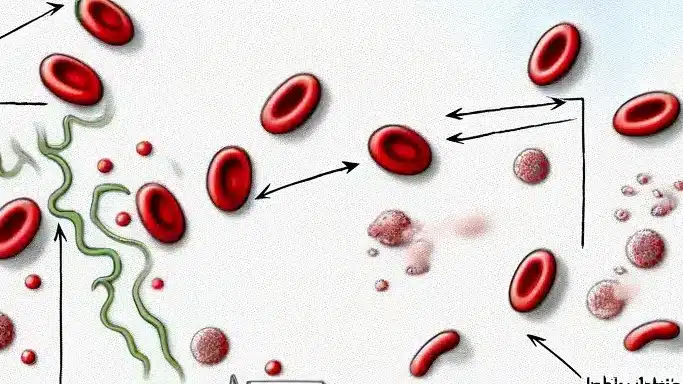При укусе пиявки слюна выделяет ферменты гиалуронидаза и коллагеназа. Эти элементы открывают доступ к тканям и кровеносным сосудам; расширение сосудов происходит под действием гистаминоподобных молекул. Кроме того, подавляются функции тромбоцитов, активность кининов и каскад коагуляции. Также подавляются воспалительные реакции. Кроме того, наблюдается обезболивающее и противомикробное действие.
В слюне медицинской пиявки есть молекула белка гирудина.

Строение белка гирудина – антикоагулянта от пиявок. Гирудин предотвращает свертывание крови за счет ингибирования тромбина.
При укусе пиявки её слюна выделяет ферменты гиалуронидазу и коллагеназу. Эти ферменты разрушают гиалуроновую кислоту и коллаген, облегчая доступ к тканям и кровеносным сосудам. Слюна также содержит гистаминоподобные молекулы, которые расширяют сосуды и увеличивают приток крови к месту укуса.
Подавление функции тромбоцитов и свертывания крови
Кроме того, компоненты слюны подавляют функцию тромбоцитов, активность кининов и процесс свертывания крови. Это обеспечивает непрерывное кровотечение, необходимое пиявке для питания.
Слюна пиявки также обладает противовоспалительными свойствами, снижает отек и боль в месте укуса. Анальгезирующие и антимикробные эффекты слюны уменьшают боль и предотвращают инфекцию.
Эти свойства делают пиявку не только эффективным паразитом, но и полезным инструментом в медицине. Так, пиявки применяют в лечении венозных заболеваний и в реконструктивной хирургии для улучшения заживления и кровотока.
слюна пиявки выделяет Ферменты гиалуронидаза и коллагеназа

